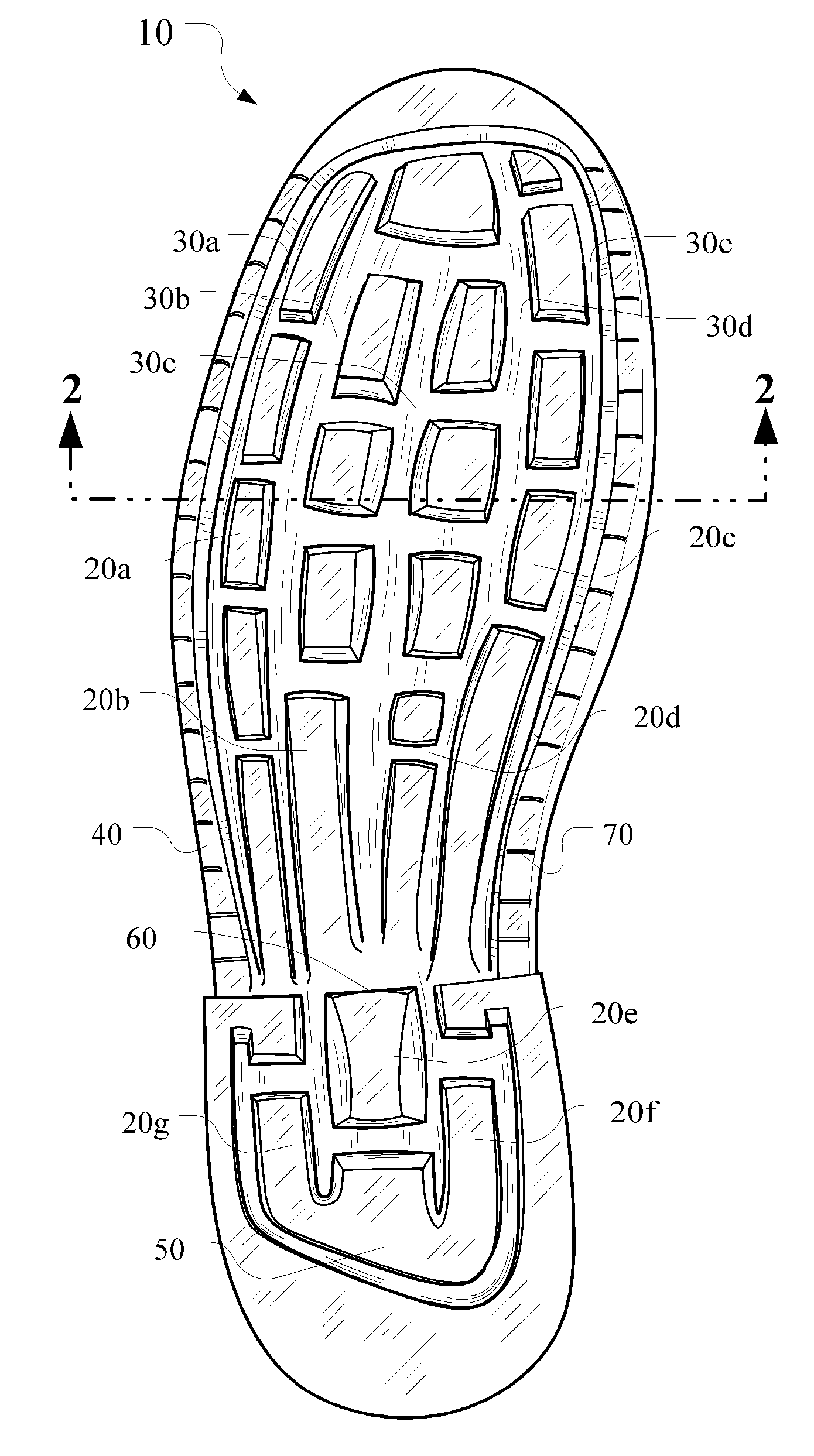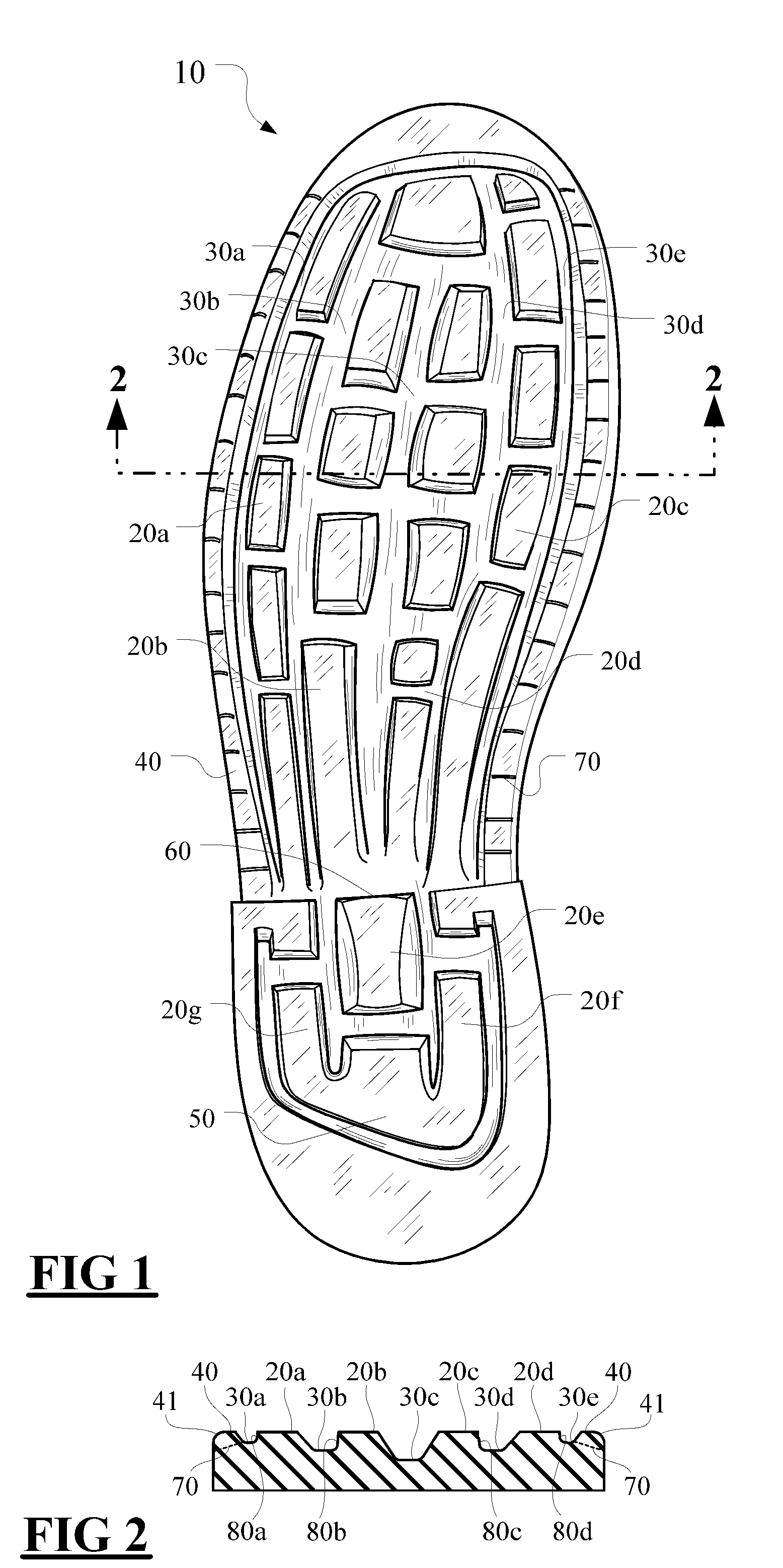Desert boot outsole
a technology of boots and outsoles, which is applied in the direction of bootlegs, uppers, stiffners, etc., can solve the problems of wearers sinking into the sand, unsuitable for use in sand, and existing work shoes and military boots not well suited to this type of terrain
- Summary
- Abstract
- Description
- Claims
- Application Information
AI Technical Summary
Problems solved by technology
Method used
Image
Examples
Embodiment Construction
The invention is a desert combat boot outsole for supporting the user in sand that does not require strap-on hardware and can be used on ladders and equipment. The outsole has longitudinal ridges defining gaps therebetween, a continuous outer edge around the sole adapted to contain sand while walking, and a sharp forward heel edge, wherein each ridge and gap has a cross sectional area, and each cross sectional area increases from a minimum at the outer edge to a maximum at the center of the outsole. The continuous outer edge is rounded on the outside to prevent easy cutting into the sand.
Turning to FIG. 1, the outsole 10 has a rounded, continuous outer edge. The outer edge 40 may also have a series of cuts 70 perpendicular to the direction of shoe travel that facilitate foot flexing. The tips of the cuts may be rounded to discourage crack initiation.
The sole 10 also has a plurality of longitudinal ridges 20a, 20b, 20c, 20d, 20e, 20f, 20g. This longitudinal tread pattern prevents ...
PUM
 Login to View More
Login to View More Abstract
Description
Claims
Application Information
 Login to View More
Login to View More - R&D
- Intellectual Property
- Life Sciences
- Materials
- Tech Scout
- Unparalleled Data Quality
- Higher Quality Content
- 60% Fewer Hallucinations
Browse by: Latest US Patents, China's latest patents, Technical Efficacy Thesaurus, Application Domain, Technology Topic, Popular Technical Reports.
© 2025 PatSnap. All rights reserved.Legal|Privacy policy|Modern Slavery Act Transparency Statement|Sitemap|About US| Contact US: help@patsnap.com


